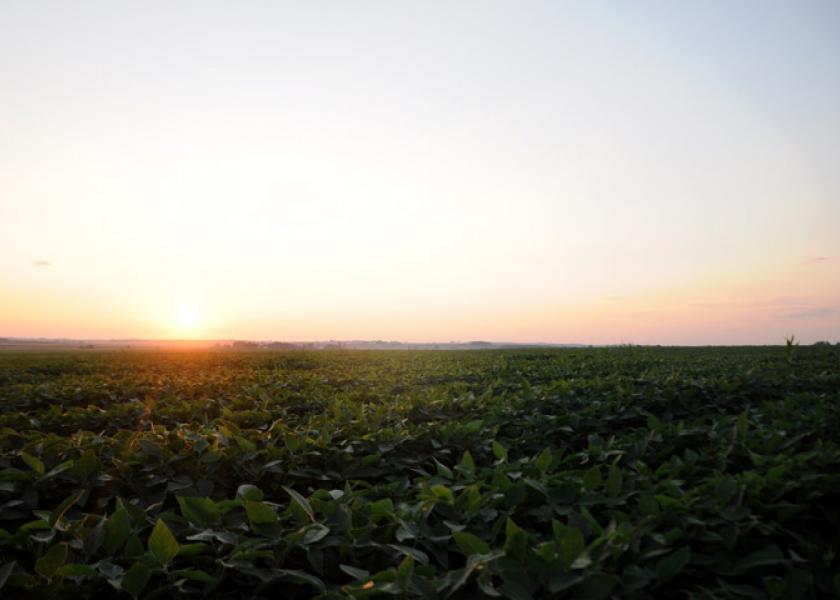As Conditions Slip, Here's Why Soybeans May Still Have a Bullish Story

As rains swept across much of the Corn Belt in June and July, it helped revive a corn crop that was extremely parched.
“We put enough moisture in the ground to support corn development through key periods in July,” says Drew Lerner of World Weather, Inc. “About one-third of the Corn Belt was still subjected to stressful conditions in July, and possibly lost a little yield. The farther Northwest you go, the more dramatic the outcome will be. But places like Illinois and Indiana will have some very nice yields, I think.”
The rains calmed some concern about the overall corn crop this year, Lerner says soybeans still have a story.
Monday's USDA Crop Progress report shows Illinois, the largest soybean producer in the U.S., saw soybean condition ratings improve 4 points, now sitting at 64% good to excellent. However, Iowa and and Minnesota crop conditions went the opposite direction, with Iowa's crop now 61% good to excellent, a 4-point drop in a week, and Minnesota's crop condition ratings dropping 7 points, to 36% good to excellent.
Minnesota's 33% good/exc is the worst since 2003.
Poor/very poor #soybeans, July 25:
ND- 41%
SD- 26%
MN- 20% — Karen Braun (@kannbwx) July 26, 2021
Nationally, USDA says 58% of the U.S. soybean crop is in good to excellent condition, 2 points lower than the week prior.
“It's the soybean crop that I'm most concerned about because when we get into August, the same pattern we've talked about for July is still going to be in place,” says Lerner. “However, the ridge of high pressure will be a little bit more dominating and a little bit farther to the east, so that we can expand that dryness out of the Dakotas into Nebraska, Iowa, Wisconsin, maybe even into part of Illinois. So, when we get into that pod setting and filling stage, the soybean crop is probably going to experience the greatest amount of stress. So, soybeans in my mind, probably have more to lose than the corn crop does.”
According to USDA’s June acreage report, North Dakota farmers planted 7.1 million acres of soybeans this year, which was a 3% bump from 2020’s final tally. And in mid-July, only 21% of those acres were considered in good to excellent condition by USDA, with 37% rated poor to very poor.
“One thing you need to know about North Dakota is that we started the year incredibly dry,” says Tommy Grisafi of Advance Trading. “When you see these timely rains hit, and then the following week and you have 100-degree days and wind, that water goes away. We just have no subsoil moisture. So, we'll see what's out there. Soybeans are very resilient plant, but there are some poor stands in North Dakota.”
USDA’s updated look at the U.S. supply and demand balance sheet in July produced a shocker with wheat. USDA forecasts durum wheat production to fall 46% from 2020, and spring wheat production is expected to drop 41%, a statistic one analyst says could be an indicator of drought’s impact on more than just wheat this year.
"The other thing that kind of concerns me is if spring wheat in those areas is in this bad shape and it's that much worse than the trade had expected, what does that mean for corn and soybean crops up in some of those same areas? “We've seen big acreage expansion of both crops in the Dakotas and some of these same areas. So, it probably doesn't bode well for USDA's corn production numbers in North Dakota down the road," says Joe Vaclavik of Standard Grain.







